Guest post by Axel Lavergne, Founder and CEO of Reviewflowz. Intro by Joe Kevens, Founder of B2B SaaS Reviews.
Love ‘em or hate ‘em, customer reviews are pivotal in B2B SaaS. They can help buyers make informed decisions and help vendors with demand generation, messaging refinement, and decision-making.
In this post, Axel Lavergne, Founder and CEO of Reviewflowz, shares ten actionable ways for B2B SaaS vendors to maximize the potential of customer feedback in the form of reviews.
Axel’s expertise in review management, as highlighted in his recent B2B SaaS Reviews interview, informs these insights. Through Reviewflowz, he’s transforming how companies approach review generation and utilization—from process automation to high-value reviewer identification and extracting actionable insights.
Whether you’re aiming to understand your reviewers better, streamline workflows, or harness AI to uncover hidden feedback patterns, these strategies will help you leverage your customer reviews effectively.
Let’s learn how to turn your reviews into a strategic advantage from Axel.
Table of Contents
#1 Know who is reviewing you
As fancy as in-app pop ups are, they’re just not as effective as some vendors would have you believe.
If you want to get reviews, it comes down to the usual triptych for any marketing operation:
- Audience
- Message / Offer
- Channel
Here’s where reviewflowz can help on the audience, and on the offer.
If you run incentivized review campaigns through reviewflowz, we’ll collect review completion claims from your clients, clean them up and order them nicely so you can approve or disapprove your customers’ claims. We can also take care of fulfillment for you, through Sendoso or TangoCard.
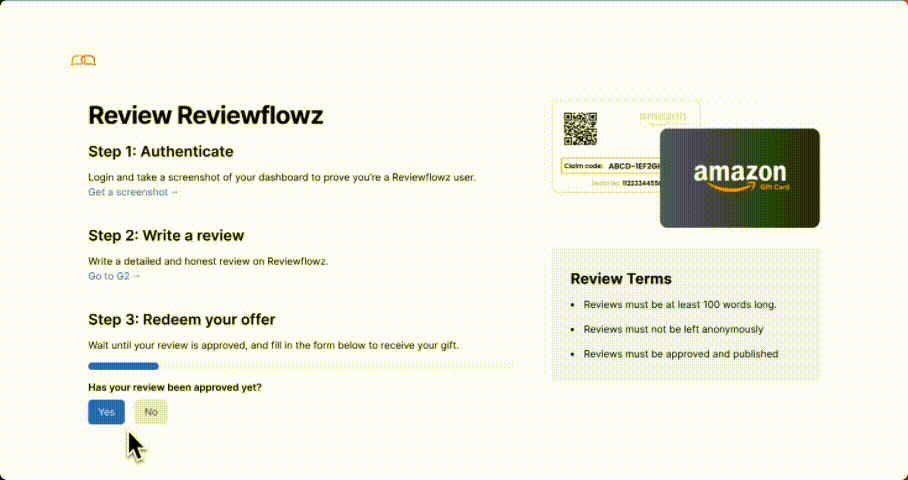
What this effectively does is allow you to run incentivized campaigns confidently, with customized incentives of your choosing.
But what this also does is give you access to the ID of your reviewers.
As I like to often point out, the clients the most likely to review you are the clients that already reviewed you.
Ignoring this is playing review gen in ultra-hard mode.
And most review platforms have you playing ultra-hard mode because they need unindexed content. You don’t. Your prospects don’t. And your clients don’t.
Run incentives that will speak to your audience, and know who’s “converting”.
Sounds like marketing 101, yet it is somehow almost always overlooked.
#2 AI-driven search amongst all your reviews
Reviews can be a lot more powerful than just used as quotes.
We plugged a conversational AI assistant on reviewflowz, which can access all your reviews. Each account gets their own assistant to ensure proper confidentiality, and to make sure GPT only uses relevant information to your specific context.

A few customers have started to use it quite extensively for their marketing copy.
GPT isn’t all that great at complex analysis and crunching through loads of data, but it is amazing to get past writer’s block, and to fetch information from a database.
This GPT assistant is a great way to search reviews easily for a number of use-cases.
For example, Chuck from the screenshot below used it to surface evidence for a Magic Quadrant submission.

Other customers also use it to search reviews by industry or role to craft landing pages and specific copy

#3 Review automation
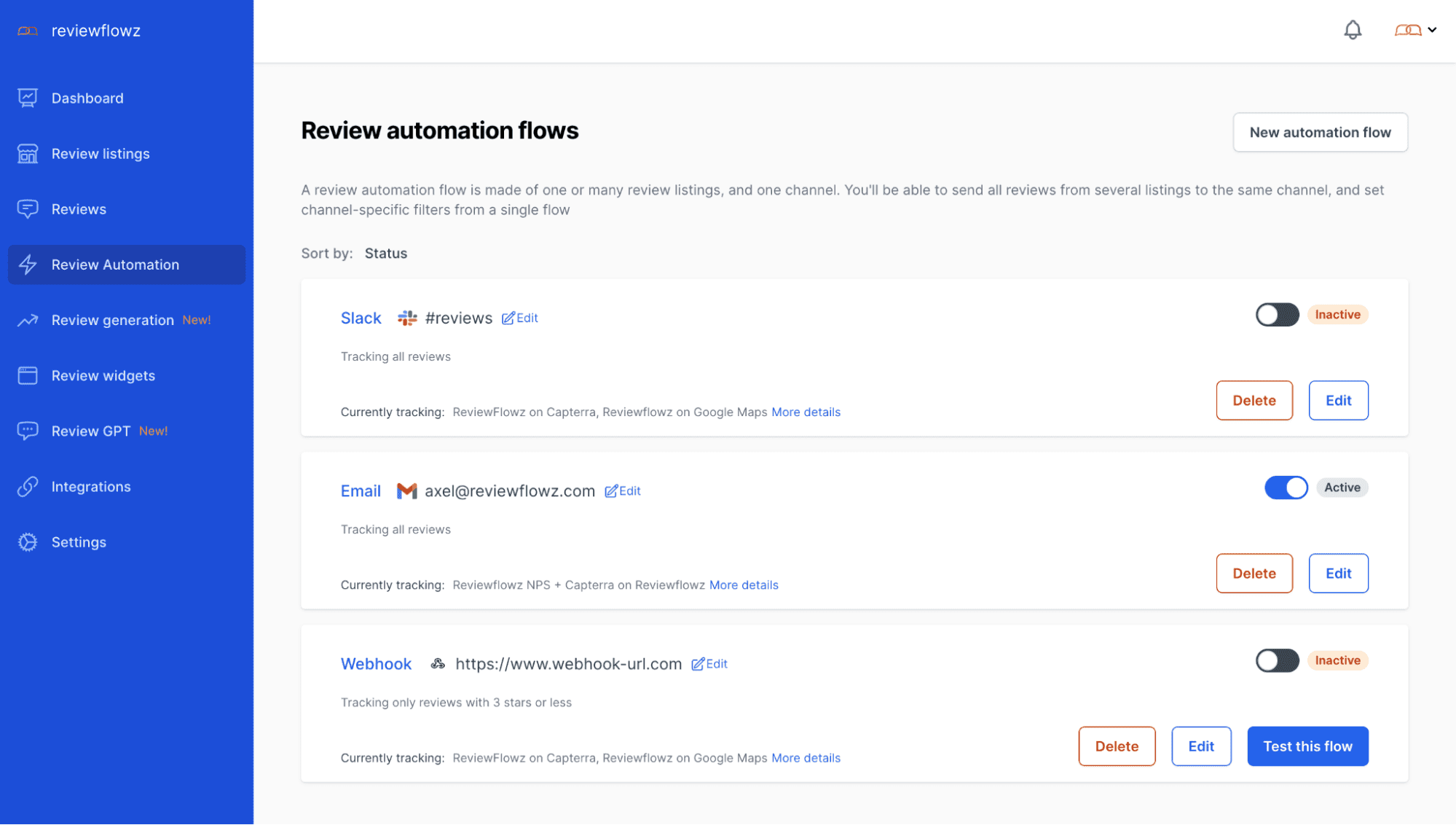
Customer reviews are usually the source of some kind of workflow, or should be:
- Most companies have a way to handle bad reviews, have them escalate rapidly through the support levels until someone can provide a satisfactory answer to the customer
- If you’re running incentivized review campaigns, you’re going to need to fulfill that incentive. The inability to do that is the reason why most people run RAAS campaigns with review platforms, despite appalling performance and the terrible impact on brand image. But really it’s not that difficult.
- If you’re running incentives on the CSM side, you’re going to need a way to attribute new reviews to the right CSMs, and then a way to increment their monthly or quarterly bonus.
- At the risk of sounding like a broken record, you should be able to know who gave you 5 stars on any platform. They’re your most engaged customers. This is the single most valuable customer segment to market stuff to. If you don’t have that segment, you’re leaving tons of value on the table.
- Some data teams will want to play with the data and LLM models to see if they can identify patterns in positive and negative sentiment.
- Some product teams will want to look at the feedback they already have on a specific feature or aspect before running ad-hoc surveys
- And good old marketers will have some sort of monthly or quarterly report to fill with new reviews, positive and negative, counts, scores, ranks, and all sorts of things.
If you’re doing any of this manually today, stop immediately and reach. We’ll save you thousands of dollars and hours of work
#4 Internal Marketing

Reviews are one of these things most people actively ignore when everything is working out, and suddenly find interest when a bad review pops up.
In my experience, it takes incredible patience, and skill, to move an organization from that sort of default stage to an organization where customer reviews – and customer marketing in general – become a part of everyday conversations, OKRs, and where (real) milestones are actually celebrated.
I mention real milestones because I feel like the badge inflation we’ve seen from the main software review platforms over the past years is effectively making this even harder.
So the very first thing I recommend to most of our new customers is to set up a public Slack or MS Teams channel called #reviews and pipe every new customer review there.
It’s extremely simple, and it goes a very long way in making reviews organizationally important.
Most of our new customers who set this up actually see a significant increase in the number of new reviews their sales & support reps collect within a few weeks.
Before updating their review campaigns, setting up CSM incentives, or anything like that.
Customer reviews simply become part of the Slack messages everyone reads every day and that alone helps with getting more reviews.
Positive reviews are celebrated, and negative reviews are addressed. When someone is mentioned by name in a review, they get tagged and can react or give context. Whether that review is positive or negative.
Handling reviews can get very lonely at times, but it’s a critical aspect of any B2B brand’s marketing, and reviews have an almost visceral aspect to them, especially for founders.
Also, I love this video from Dharmesh Shah (CTO at Hubspot) which explains how the voice of the customers – with their actual words – is a critical aspect to alignment and motivation within an organization.
#5 Automated support swarming for bad reviews
Many of our customers are looking for peace of mind. Knowing that if shit hits the fan, they won’t get caught with their pants down.
And the easiest way to do that is to make sure bad reviews are handled quickly, and by the right people.
In complex software organizations, it’s common to have customer support specialize to an extent.
For example, one of our clients is running a wordpress plugin. They can’t really have all of their support staff trained on the WordPress plugin and environment since it only represents a small portion of their business. Small, but significant enough that they want to do it properly. Also, WordPress is open-source, so not a single wordpress site looks like the next one. Extremely costly in terms of support.
So what they did was set up a Make.com workflow so that any review from their wordpress listings would be piped to their Zendesk account, and flagged as WordPress. Which would immediately tag the right people on the team.
Another client uses our AI tag functionality for this. They have support staff who specialize in different topics on the product, but no way of differentiating the feedback using only the platform where it’s posted. So they set up a few tags using the product’s feature names, and our AI assistant automatically tags reviews based on their content with the right feature names.
They’ve replicated those tags into their helpdesk (I think Intercom) and they attribute reviews to the right people this way.
You could have a human intervention here, ping someone specific and have that person attribute the review to the right people.
The problem is what happens when that person is off. Or sick. Or forgot entirely about this thing for a couple of weeks.
There won’t be any follow-ups. No notification. No accountability. Just an email lost in a flood of emails. And a furious customer left to deal with their frustration on public review platforms.
#6 Automated reporting & quotes
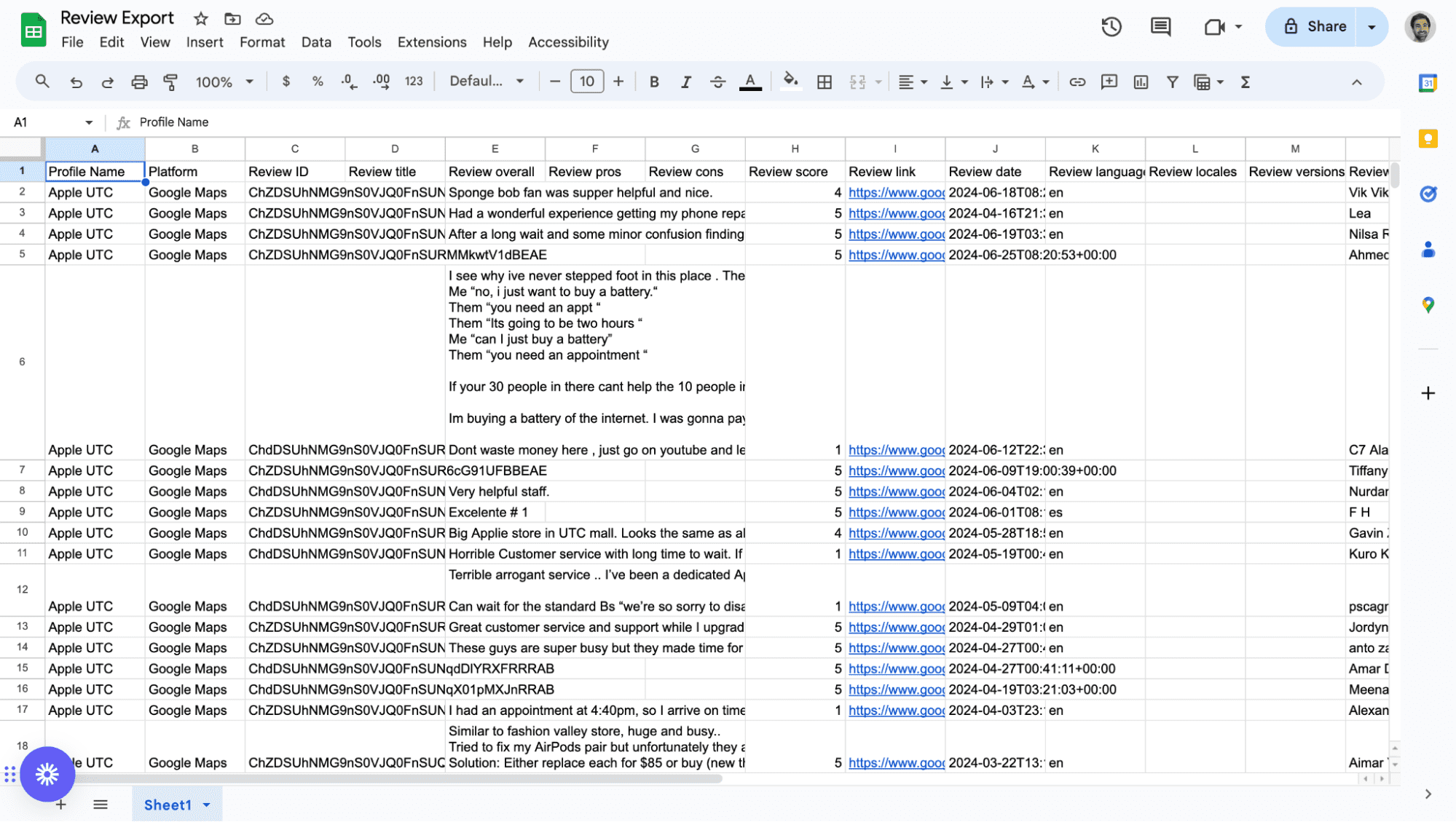
Yeah, so we’re in 2024.
You shouldn’t be copy-pasting review quotes and numbers into spreadsheets and slide decks.
Seriously.
Every marketing team at some point has a review or voice of the customer or brand reputation or whatever report.
That report takes forever to update.
And if you’re still struggling reading through hundreds of reviews to send a quote to someone on the marketing or sales team, you can use our search, and our tags to find relevant reviews in seconds. With direct links to their source every time.
These are the low-value tasks you should not be spending time on, and yet more often than not, our customers tell us this is essentially what they spend their time doing before using reviewflowz.
#7 Relevant Social Proof

An impactful way to use reviews is to show them on your website.
Mostly everyone does that, in some way, shape or form.
But you’ll typically see the exact same reviews across all the pages on the marketing website, and more often than not, they get updated every couple of years.
Here’s how reviewflowz can help.
The AI assistant will tag your (past and future) reviews with tags you define. We feed the entire review to the assistant, reviewer information included. So you can use things like industries, roles, features, sentiment, anything you think GPT will be half-decent at identifying.
Then, you can build simple, responsive, and customizable review widgets that will show your best, most recent reviews that fit a set of tags.
Some of our customers use this for their competitor pages. Showing reviews that directly address the competitor instead of generic reviews has helped one of our clients increase click to lead rates by 12%.
Some of our clients use this for their industry pages. They run specific pages for each industry they address, and show reviews directly relevant to a given industry on that page.
Truth is, all you can do as a marketer is be found, and be relevant.
So be relevant.
#8 Automated review balancing
One of the challenges for established SaaS companies is knowing where to send customers for new reviews.
Some of our clients are literally active on 10 different review platforms, with sometimes 2 or 3 products.
Usually, their strategy to handle this ends up looking something like this:
- I want to grow on this platform, I need more reviews sent there
- I want to maintain my current position and rating on this platform, send reviews only as required for that objective
- I don’t need to focus on this platform, but I need 10 reviews per quarter to stay on the grid, or I need 10 5-star reviews per year to get into the selection, or I need to maintain a 4.5 rating or more because it ranks high on our branded SERP, etc.
At reviewflowz, our review campaigns factor this in by design.
You send your customers to a unique link powered by reviewflowz from as many sources as you want, and we’ll redirect that traffic to the right places, with or without showing a landing page explaining what to do beforehand.
Copy your link, give it context (using contact attributes, UTMs, anything you think relevant), and we’ll store the context, and use it to redirect your customers to the right place.
Simultaneously, we’ll store the information so you can easily find who was sent where, and whether they ended up reviewing you or not.
No more editing endless automation workflows with 12 branches. No more ad-hoc campaigns every week for a different platform.
#9 G2 Rank & Category Tracking
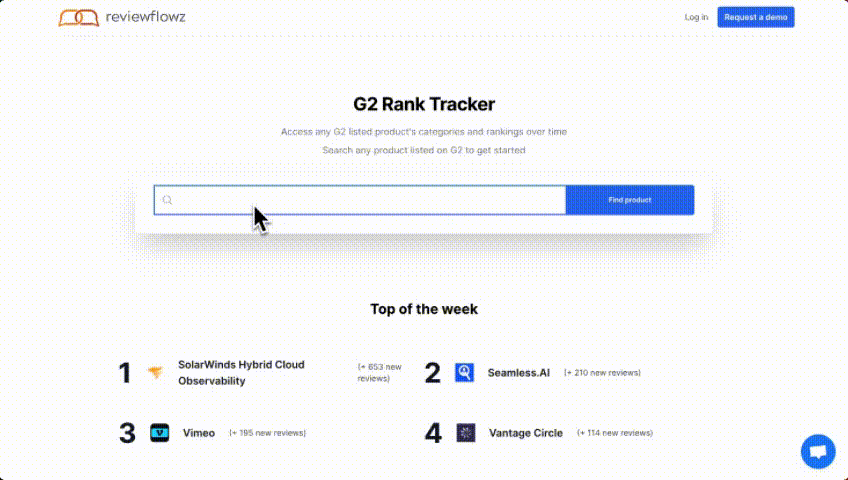
We published a pretty extensive post on G2’s ranking factors. Basically there are two components to your grid score, which translates to your G2 ranking on any given category:
- Satisfaction: essentially made of your review scores and their significance (i.e. volume)
- Market presence: essentially made of your number of employees & number of reviews
There are a few caveats, but you can’t get to a given rank position without the right company size, or review count.
Our G2 tracker keeps tabs on the rank, satisfaction & market presence scores, and review counts of every company on G2, in every category. Week after week.
Knowing what it takes to get to your objectives is really step one to build a strategy, and that’s what this G2 tracker helps with.
#10 One-off CSV data dumps
After the AI hype started dying down and data teams started actually working on, we got an increasing number of requests to just access review data.
No monitoring, no ongoing requirement, we just want to know what people are saying about our industry sort of thing.
So we set up this dead simple interface where you can search for any company on any review platform, immediately access 25 of their latest reviews, and export all of their reviews to a clean CSV file at $0.10 per row.
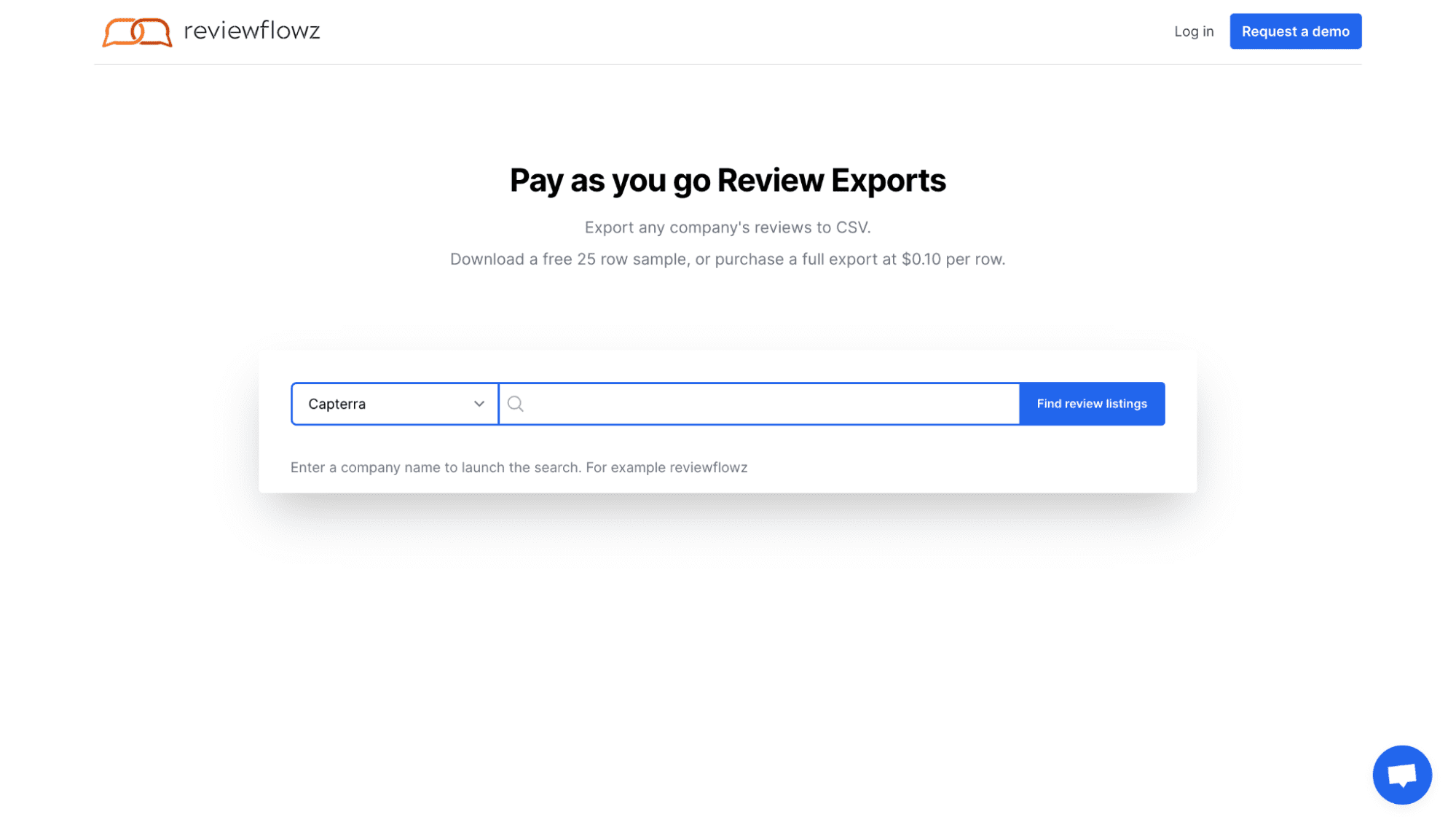
Truth is if you look for it long enough, you’ll find a way to scrape that data.
But you’ll need to figure out how to get past bot blocks, how to parse & wrap the data properly, how to deduplicate the reviews (think of review updates for example), how to enrich it (language, labeling, …) and that’s just half of the problems you’ll face.
If you know someone struggling with all of this, or if your data team told you they’d need a couple of weeks to figure this out, send them this link.
Save everyone a headache, and a couple of weeks.
To learn more about reviewflowz, visit our site or read Joe’s reviewflowz review.
Author
-

Axel Lavergne is the Founder of reviewflowz.com, a review management tool designed for B2B SaaS companies. He is also the Co-Founder of Salesdorado, a leading media site in France focused on sales technology. Previously, Axel served as the Head of Growth at Brevo (formerly Sendinblue), where he played a pivotal role in tripling the company's monthly recurring revenue (MRR) over two years.




